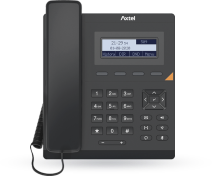Current affairs have resulted in businesses shutting their doors and asking staff to work at home when possible. The first barrier to overcome is team communication, as voice communication and video conferencing takes the role of face-to-face interaction.
The concept of working from home has steadily gained acceptance over the last decade or so. Most businesses – and many staff members- viewed it more of an extra perk the employer can offer, rather than the core model of operation, however. While a growing number of managers allow staff to occasionally work remotely, most are skeptical on whether it can offer the same dynamics and level of interpersonal creativity an office environment can. Some have trust issues regarding their team members, because they cannot physically check in on them. So far, structural working from home has been mostly consigned to freelancers. And even many of them actually opt for a coworking space to at least mimic a bustling working environment to help them stay focused.
Remote Working is Here to Stay
That common wisdom was slowly changing before. That process is now suddenly accelerating. A growing number of businesses are rapidly implementing structural home working arranging. One extremely important component of a successful remote working arrangement is communication. ‘Facetime on demand’ is often seen as the main benefit of the traditional office environment, and finding a suitable replacement can be very challenging.
Communication is Key
An important reason why facetime is so coveted is that communication is clear. Setting aside the value of non-verbal communication, there are no sound distortion between sender and receiver. The potential of misunderstanding is simply much lower when interacting face to face rather than over a distance.
Clarity of communication is less of a technical issue than it was a decade ago. Broadband internet is available to most in the developed world, while IP telephony and Unified Communications have come a long way as well. In fact, it is mostly the periphery that is often the bottleneck for audio quality: earphones and microphones.
Earphones basically have two functions: they produce the audio transmitted through the network so we can hear them, and they need to keep ambient noise out. That balance is more nuanced than most people think. Flimsy earphones that are often packed in with a budget smartphone not only offer poor audio quality, they also offer almost nothing in terms of ambient isolation. But high-end shell earphones that are great for listening music can even be worse for communication purposes. They may do an excellent job in shutting out ambient sound, but they are also effective in muting the user’s own voice. And, because meetings can take a while, they need to sit comfortably so workers don’t have any issues after prolonged use.
For microphones, the question of quality is more one-sided: they need to pick up your voice and nothing else, without interfering during normal working activities.
Software Compatibility
Another aspect that plays a heavy role in the success of a remote working setup is the software. Whether it is Skype or a complete Unified Communications suite, the solution needs to be selected based on needs and budget. One thing that is always important to remember, however, is headset compatibility. Not all suites support all headsets, and not all headsets are optimized for all communication solutions. Call accepting buttons on the headsets are of little use if the softphone doesn’t support it on that particular model, for example.
Our offering
The solutions of Axtel Headsets are all designed with audio quality and usability as core features. The VOICE portfolio models in particular are very well suited for remote working, with audio quality and wear comfort that fit every working environment.
The possibility for both 28mm speakers and 40 mm speakers allows for business users to weigh their choices based on their personal situation. The 28mm speakers are optimized for conversations and allows staff to concentrate on their calls. The foam earpads in VOICE 28 isolate the user from ambient sounds, without interfering with their ability to communicate. The 40mm speakers, meanwhile. offer unrivaled enjoyment of music and media, and the leatherette earpads optimally isolate the user from ambient sounds.
The noise cancelling microphone in both variants ensures that ambient sounds also do not interfere with the other party’s capability to hear and understand the caller. Crucial for home environments, which are less controlled than the office.
The same goes for worker safety. That goes far beyond wearing comfort, even though that aspect is crucial for easily distracted home workers clocking long hours. Axtel Headsets are always equipped with shock acoustic protection, which shields the user against sudden and unexpected loud sounds or high-pitched noise that can induce hearing damage. Finally, all headsets are produced from environmentally safe materials.
Choice of Connectors
The wide choice of connector plugs, with USB, 3,5mm jack and, in case of the Axtel Professional portfolio, QD options, allows for a wide range of use cases. The QD (Quick Disconnect) connector allows home workers to use any communication device they use, while being able to move around the premises without dropping the current call. QD is a great fit for professional users who need the same technical possibilities at their home office as available in a fully equipped facility.
Whether connected to a computer, deskphone or smartphone directly through USB or 3.5mm jack, or indirectly through QD, the wear comfort makes sure that remote workers can stay focused, productive and above all: reachable.
If you want to know more about our headset offering, please have a look at our website and technical brochures. And if you have any queries concerning our portfolio or your personal business needs, please contact us. We are always ready to help.





